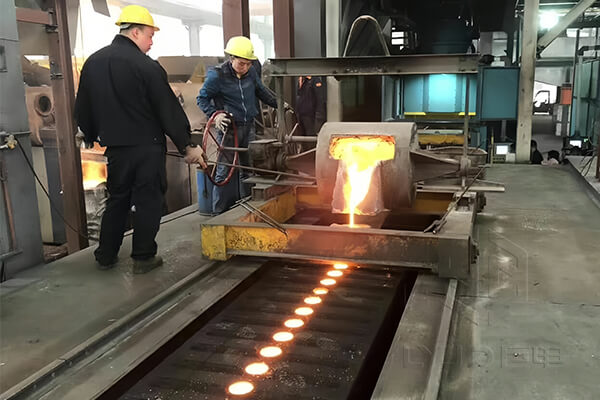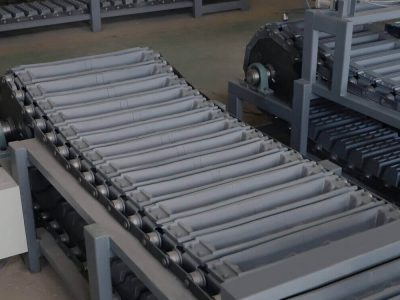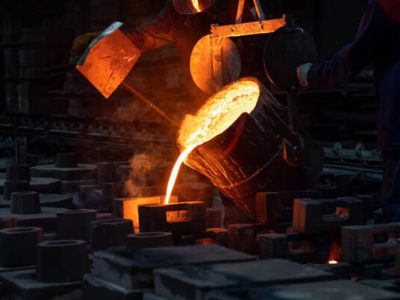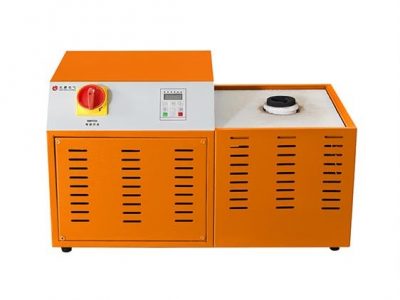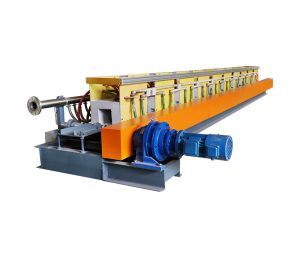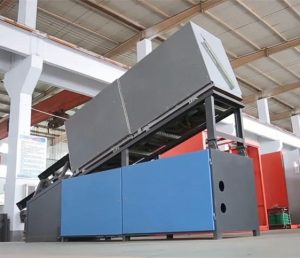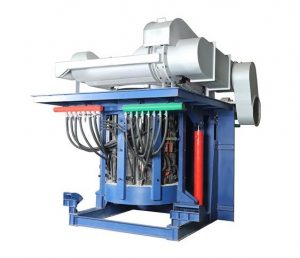A steel casting line, also known as a steel foundry casting production line or casting facility, is a specialized industrial setup dedicated to the production of steel castings. Steel castings are vital components formed by pouring molten steel into molds or patterns and allowing them to solidify and take on the desired shape. This casting process enables the creation of complex and intricate shapes that may be challenging or costly to manufacture using other methods.
Let's delve into the various components and processes involved in a typical steel casting line.
Pattern and Mold Preparation
The casting process commences with the creation of patterns, which are replicas of the final product. These patterns are crafted from materials such as wood, plastic, or metal and are instrumental in forming the mold cavity. Mounted on a gating system, patterns include channels and risers that facilitate the proper flow of molten steel into the mold.
Molding
Using the prepared patterns, molds are created by packing molding material, such as sand or refractory material, around the pattern. This results in a negative impression of the pattern, known as the mold cavity. The chosen molding material must possess sufficient strength and refractoriness to withstand the high temperatures of molten steel.
Melting and Pouring
A steel casting line incorporates a melting furnace where raw steel, typically in the form of scrap or ingots, is heated to high temperatures to melt it. Alloying elements can be introduced to achieve the desired properties of the final product. Once the molten steel reaches the appropriate temperature and composition, it is poured into the prepared molds.
Solidification and Cooling
After pouring, the molten steel solidifies within the mold cavity, adopting the shape of the pattern. The solidification process is carefully controlled to ensure uniform solidification without defects. Cooling methods, such as water or air cooling, are employed to expedite the solidification process and achieve the desired material properties.
Shakeout and Cleaning
Once solidified and cooled, the molds are removed from the castings through a process called shakeout. The castings then undergo cleaning to eliminate any residual mold material, often referred to as "fins" or "flash." Cleaning procedures can include shot blasting, grinding, or chemical treatments to achieve the desired surface finish.
Finishing Operations
Following cleaning, the castings may undergo additional finishing operations to attain the desired surface finish and dimensional accuracy. These operations can involve machining, grinding, heat treatment, and surface coating, ensuring that the castings meet the required specifications and functional requirements.
Inspection and Quality Control
Throughout the casting process, inspections and rigorous quality control measures are implemented to ensure that the castings meet the necessary standards. Non-destructive testing methods, including visual inspection, X-ray, ultrasound, and dye penetrant testing, are employed to detect any internal or surface defects and ensure the overall quality of the castings.
Storage and Shipping
Once the finishing operations and quality control checks are complete, the finished steel castings are typically stored in warehouses or shipped to customers for further use in various industries. These castings find applications in diverse sectors such as automotive, aerospace, construction, and machinery manufacturing, where their strength and durability are essential.
Overall
It's important to note that the specific configuration, processes, and technologies employed in a steel casting line may vary based on factors such as the size and complexity of the castings, the production capacity of the facility, and the specific requirements of the customers. Continuous advancements in materials, equipment, and casting techniques continue to enhance the efficiency and precision of steel casting processes.
























